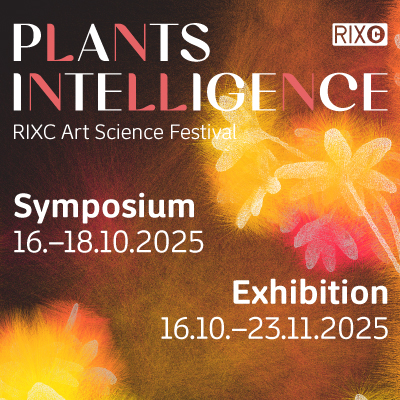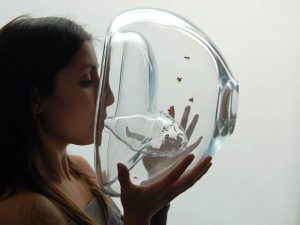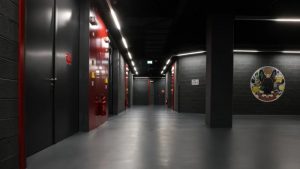Back to the Interactivos? Garage Science series. If you have missed the previous episodes (Interactivos? Garage Science: Interactivos? Garage Astrobiology – Microbes and EMF and the Fruit Computer Laboratory), here’s a little blurb:
Garage Science is one of Medialab Prado‘s latest Interactivos? workshops. It took place in Madrid in early February and was inspired by those home laboratory-type experiments that rely on web-based communications to give rise to real and virtual communities of amateur scientists.
Interactivos? Garage Science explored the practices, where art, science and technology meet. During two weeks, Medialab was turned into a temporary garage laboratory where low-cost, accessible materials were used to develop objects and installations that combine software, hardware and biology.
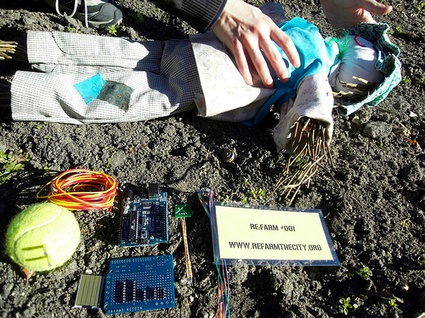
One of the projects i found most interesting was re:farm the city by Hernani Dias (in collaboration with Belén Illana, Tiago Henriques, Eduardo Meléndez, Gabriela Troncoso, Dani Quilez, Mar Canet and Varvara Guljajeva.)
The project aimed at developing a series of tools that would enable city-dwellers to grow and monitor an urban garden using open-software and as much recycled materials as possible (mostly city waste that may include computers, printers, traffic lights or plastic bottles.)
re:farm also brings on a series of important aspects: attention to biodiversity and to finding the native fruits, herbs and vegetable species that are best suitable for each city; visualization of the network of beneficial associations among plants and other species depending on geography, time and size of the garden; etc.
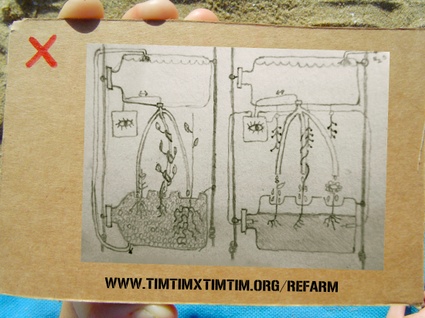 Your project re:farm aims to ‘develop tools to manage/monitor/research an urban garden with open-software and open-hardware’. How did you come up with this idea? Why was it important to you?
Your project re:farm aims to ‘develop tools to manage/monitor/research an urban garden with open-software and open-hardware’. How did you come up with this idea? Why was it important to you?
I first started to think that I should know where my food comes from, so I built a garden in our terrace in Barcelona to have a local production. My older sister that long lives on eco-educational projects helped me with the first seeds and knowledge. Then came the Summer, and we went on holidays. Everything was ok when we left, but when we returned our farm was the driest -urban-farm-cemetery in all city. And this was the turning point.
To make a urban farm possible you must have the tools to design, manage and monitor a farm. At the end we, those who live in the city, are now urban animals not farmers. In the last century we lost almost all the farm knowledge, centuries of sustainable agriculture, thousands of years on vegetable domestication and food quality research. I’ve learned a lot during the research for this project: 4 months ago I didn’t know which were the best tomatoes for a gazpacho soap and neither how or when are they planted or even how the photons are collected on nano-antennas to produce energy on a leaf.
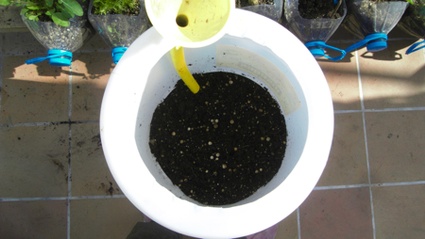 Why would anyone need software to cultivate a garden?
Why would anyone need software to cultivate a garden?
Hehe, we shouldn’t :) but if you ask to someone next to you in the street what is the best vegetable to plant or eat today, now, this week? Or what is the fruit of this season? Where did it came from? What are our local resources? What are our local varieties? What is the name of cucumber in other languages? How is it cooked in different cultures? What are best refreshing tea herbs for a hot summer day? Which fruits have a specific vitamins group? Software could give some help on this ;)
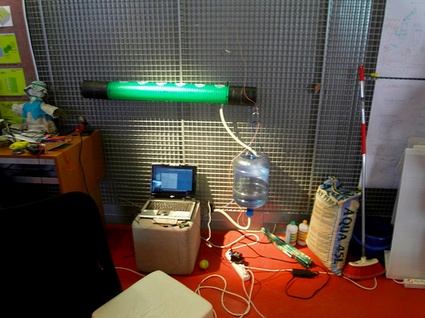 re:farm was already started before you applied to the Medialab Prado workshop if i understood correctly. Which part exactly did you develop during the Interactivos? workshop?
re:farm was already started before you applied to the Medialab Prado workshop if i understood correctly. Which part exactly did you develop during the Interactivos? workshop?
In Medialab we dug a lot and the subject started to spread complexity. I’ve started in Hangar with the idea of building a urban farm made of city trash and with a watering system based on open software and open hardware. When I applied to Medialab I had almost the big picture of the project in my head, and during the 15 days of the workshop in Madrid despite the fact that we were 7 persons working day and night with some beers also I realised that what we didn’t had, was time. During the 15 days we built a DIY low budget hydroponic system and we designed 2 farms on botanical garden. One is a gazpacho farm made with local varieties and on the other are the vegetables ingredients to make a recipe of a Spanish cook, Rodrigo de la Calle. We also started to make the software application but we didn’t finish the 0.000047 beta version :)
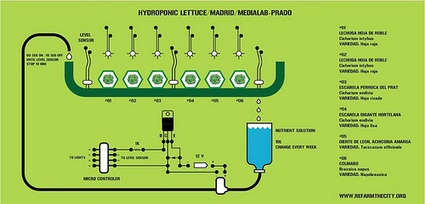 Hydroponic circuit
Hydroponic circuit
You live in Barcelona. Is there an existing or growing culture of growing urban garden in that city?
In the city there are some urban gardens and they are forming a growing community. There are some amazing squat initiatives, some city-council farms and also small home farming. But what is the most impressive thing around here is the local biodiversity. There are like 8 different kinds of tomatoes for 8 different recipes. The Catalans are very connected to the land and to cooperative social movements; and this is a good starting point.
Isn’t pollution a problem if one wants to grow a garden in a city?
Pollution? What can I say about that… pollution is bringing vegetables from the other side of the planet on a large scale. Pollution is when you go to the supermarket and buy the same tomato here, in Madrid, in Andalucia, in England, in Holland, in Germany or in NY… Pollution could be producing vegetables that are designed to be beautiful, bright, round, cold resistant, and hold 4 weeks on a supermarket display and are environmentally expensive. Pollution is also the rain that grabs all the atmospheric contaminants and brings then to soil that in most cities is already heavily contaminated. We can’t escape it. But there are some oasis in every cities and it is easy to create many more. that’s also one of the goals of re:farm.
re:farm the city is global knowledge to local problems at the end we are all humans with more or less the same nutrient needs. One of our biggest “problem” is that we are raising the number of humans but we can´t call that pollution :)
One of the objectives of re:farm is the creation of “instructables” on how to build an open-hardware watering and illumination system with city waste: computers, printers, traffic lights, large plastic bottles, etc. Can you give us an example of this?
One example is the low budget hydroponic system that we built: a plastic tube found on the street (we went hunting for materials:) a water pump from a car (a repair car store gave us an old one for free), a big bottle of water 20L some wires and an arduino. We are also testing some re:farm boxes and soon there will be more instructables on our web.
You are going to work on THE ALLOTMENT PLOT in Sweden. Can you tell us what your plans about it are exactly?
Yep, we are refarming on Sweden. Annika from The Allotment Plot invited us to design some farms and we have proposed 4 ideas for 6 farms.
swedish husmanskost (traditional food)
plot#001 ärtsoppa farm
plot#002 midsommar farm
basic food
plot#003 beer farm / vodka farm
plot#004 bread farm
global gastronomy / local production
plot#005 pizza farm
indoor health
plot#006 indoor air quality improvement
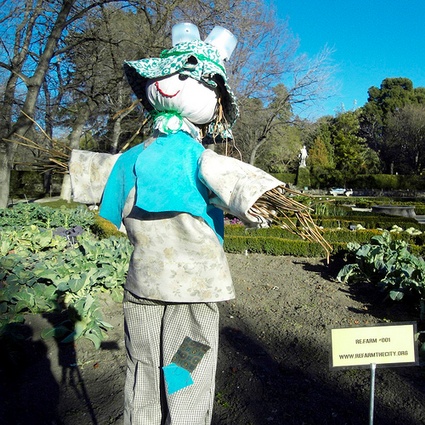 Any other upcoming steps for the project?
Any other upcoming steps for the project?
The project is on his spring time! lets see how it grows and what can we have In Autumn. We are now applying for grants to continue the development and the community is also growing. So spread the word: any help is welcome :)
Thanks Hernani!
All images re:farm.

